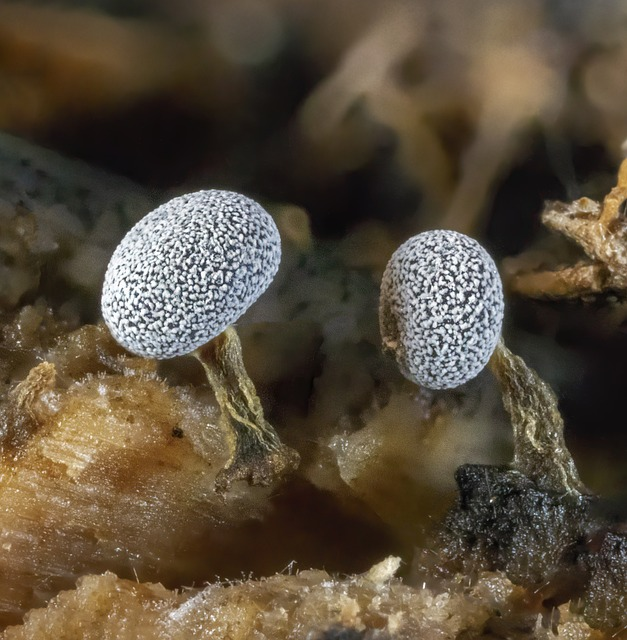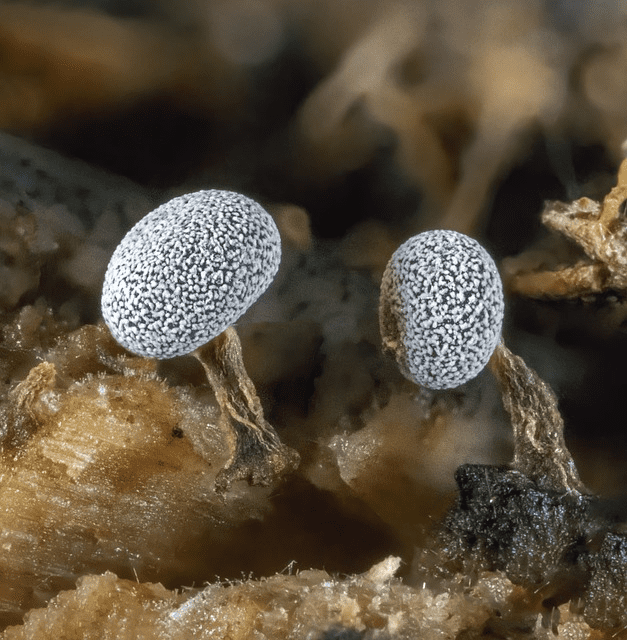Take care of that mold hiding under the basement and receive a quote from the pros! Send us an email with the exact zip number of professionals near you. Mold loves the warmth of the basement and wet conditions. Unfortunately, mold can cause significant damage to the house and adverse health outcomes. If you see molds in your basement, take them out ASAP if you can. These guides show you what is necessary to prevent mold from growing and forming in the basement.

Mold is a common problem that can occur in basements due to their damp and dark environments. Not only can mold damage your property, but it can also pose serious health risks to you and your family. Fortunately, there are several proactive measures you can take to prevent mold growth in your basement. In this article, we will explore some practical tips that can help you keep your basement mold-free and maintain a healthy living space.
Control Moisture Levels:
One of the most crucial steps in how to prevent mold in your basement in preventing mold is to control the moisture levels in your basement. Start by fixing any leaks or water seepage issues promptly. Inspect your basement regularly for signs of water damage, such as damp spots, discoloration, or musty odors. Ensure proper drainage away from your foundation, and consider installing a sump pump or dehumidifier to maintain optimal humidity levels.
Improve Ventilation:
Proper ventilation is vital for preventing mold growth. Increase air circulation by opening windows when weather permits or installing vents or exhaust fans in your basement. This helps to remove excess moisture and reduce the chances of mold formation. Consider utilizing a basement dehumidifier to keep humidity levels in check, especially during humid months.
Insulate and Seal:
Insulating your basement walls and pipes not only helps in conserving energy but also prevents condensation and moisture buildup. Proper insulation helps maintain a consistent temperature, reducing the chances of moisture condensing on surfaces. Additionally, seal any cracks or gaps in your basement walls, windows, and floors to prevent water intrusion and the growth of mold and mildew.
Maintain Proper Gutters and Downspouts:
Clogged or malfunctioning gutters and downspouts can lead to water pooling around your foundation, increasing the risk of basement moisture. Regularly clean your gutters and ensure downspouts direct water away from your home’s foundation. Consider installing gutter extensions to channel water at least six feet away from your property.
Control Indoor Humidity:
Basements are naturally prone to mold remains to higher humidity levels. Keep indoor humidity in check by utilizing air conditioners or dehumidifiers. Aim for a relative humidity level below 60%, as mold thrives in damp environments. Monitor humidity levels using a hygrometer and take appropriate measures if they exceed the recommended range.
Proper Storage and Organization:
Clutter in your basement can impede proper airflow and create areas where moisture can accumulate. Ensure proper storage and organization to minimize the chances of mold growth. Use shelving or pallets to elevate items off the concrete floor, and allow air to circulate freely. Avoid storing wet or damp items in your basement and regularly inspect stored belongings for signs of moisture or mold.
Regular Cleaning and Maintenance:
Regularly clean your basement to remove dust, debris, and potential mold spores. Vacuum with a HEPA filter or damp mop hard surfaces, and consider using mold-inhibiting cleaning products. Pay special attention to areas prone to moisture, such as near windows, pipes, and corners. Additionally, maintain your HVAC system and replace filters regularly to prevent the spread of mold spores throughout your home.
Essential Tips for Controlling Moisture and Preventing Mold in Your Basement Mold
Preventing mold growth in your basement is crucial for maintaining a healthy and safe living environment. By implementing effective strategies to control moisture and improve ventilation, you can prevent basement mold and minimize the risk of mold formation. In this article, we will provide you with essential tips to help you prevent mold growth and keep your basement dry and mold-free.
Enhance Ventilation:
Proper ventilation is key to preventing mold in your basement. Keep doors and windows open whenever possible to encourage air circulation. If additional ventilation is needed, consider using fans to promote airflow. This will help reduce excess moisture and prevent the conditions favorable for mold growth.
Detect and Repair Leaks:
Regularly inspect the foundation, walls, and pipes in your basement for any signs of leaks. If you identify any leaks, promptly repair them to prevent water from entering your basement. Taking swift action will effectively minimize the basement floor moisture content, discouraging mold growth.
Remove Wet Items:
Moisture-laden items contribute to increased humidity levels in your basement. Remove all wet items from damp basement, such as damp books, wet clothes, and any other items that can add moisture and provide a breeding ground for mold. Keeping your basement free of dampness will greatly reduce the risk of mold growth.
Check and Clean Dryer Vents:
Ensure that your dryer vent is properly installed and vented outside the house. A clogged dryer vent can lead to increased humidity levels in the basement. Regularly check the vent, both from the inside and outside while the dryer is running, to confirm proper airflow and prevent excess moisture accumulation.
Insulate Pipes and Windows:
In colder months, condensation can occur on pipes and windows, leading to increased moisture levels on cold surfaces. Insulate these areas using materials like fiberglass insulation and pipe sleeves to prevent condensation buildup. Proper insulation will help maintain a consistent temperature, minimizing the conditions suitable for mold growth.
Regular Cleaning and Vacuuming:
Maintain cleanliness in your basement by regularly cleaning and vacuuming to remove dust and debris. These particles can serve as a food source for mold, creating an environment conducive notice mold growth and to its growth. By keeping your basement clean, you eliminate potential mold growth triggers.
Utilize a Dehumidifier:
Installing a dehumidifier in your basement is an effective way to control humidity levels. Set the dehumidifier to run when the basement’s humidity exceeds 60%. This device will extract excess moisture from the air, helping to maintain an environment unfavorable for mold growth.
Maintain Gutters and Drainage:
Ensure that your basement slab gutters and drainage pipes are clear of any debris to prevent rainwater from seeping into your basement. Properly functioning gutters and drainage systems redirect water away from your home’s walls and foundation, reducing the risk of moisture accumulation.
Regular Mold Inspection:
Frequently inspect your basement for any signs of mold growth, such as a musty smell or visible mold patches. If you identify any mold, address it promptly by following proper remediation procedures. Swift action will prevent the spread of mold and mitigate potential health risks.
By implementing these essential tips, you can effectively control moisture levels and prevent mold growth in your basement. Remember to prioritize proper ventilation, address leaks promptly, remove wet items, and keep your basement clean. Additionally, utilize insulation, a dehumidifier, and maintain your gutters and drainage systems. Regular inspections will help you identify and address any mold issues early on. With these preventive measures in place, you can enjoy a dry, mold-free basement that promotes a healthy living environment.
What Causes Mold to Grow in Basements?
Mold growth grows in hot humid places, making many basement areas perfect dwelling areas. The small spore breaks down waste and mold is spread through contact with water. A basement is typically a place where moisture is collected from leaks in pipes or water heaters, condensation or rainwater from pipes, and cracks. This is what makes basements so important.
Common causes of mold in the basement
As described above, the most common cause of mold in the basement is excessive moisture, which is rarely an issue in the basement. When water is leaking or coming from inside concrete basement walls it is very important to address it to eliminate all other possible complications. What does water get from basements? We can go a little further. Basements provide water from two primary sources: Basements are lower-level spaces that are liable for water to seep into basement walls or windows.
How Does Moisture Get Inside A Basement?
The basement contains two major sources of water which are neither surprising nor surprising. Both inside moistures is present. Outside moisture source and sources include floods, rains, or ground waters. It may involve leaking to high humidity or a homeowner’s failure to properly clean up a wet towel in a closet.
Signs You Have Mold in Your Basement
Molds are generally black-brown or white-brown. These colors are commonly hidden within basement walls and corners, making it hard to tell whether there’s a mold infestation. Check if there is any fungus or other problem in your basement by following the signs of the problem. Damper & mushy smells: Mold has an unpleasant smell on soil and wood. It would smell as much fresh air as an unrelenting basement, stronger than that smell. Dark spots: Light spots in insulation or walls are signs of mold. Molds may appear black grey, green or white in colour with pink, purple, orange, steak and flat or grey texture.
Remove Mold-Damaged Materials
The mold cannot be removed from the porous material. Check all surfaces in your cellar for rust. Use the pulley to pull out walls or carpets. Put away drapes or fabrics. Place any moldy material into the garbage bag and leave it in the house. Remove them according to local laws.
Insulate your walls, basement pipes and windows
Do not make it an excuse to mold – inspect each piping to see if any leaks exist and insulate to reduce condensation caused by different piping temperatures. When you detect water stains on a pipe, ensure that it has a clean surface. Use pipe sleeves, fiberglass or insulation material to wrap the pipes as well as cover windows and doors. Research the “dew point”, which is a major problem with indoor mold and molds, particularly in cellars. Unaffected insulation can lead to condensation and dew points in the walls, and a lack of piping or pumping systems.
The ideal Basement wall assembly to prevent mold growth
This method for rigid batt insulation can take several more steps, but it offers an R-value higher per investment than SPUF and lets your work be done much better by yourself. We choose EPS instead of mineral wool. XPS uses slightly higher R per inch, but like SPUF blowing agents can cause exponential damage up to 200 times greater than EPS.
What can I spray in my basement to prevent mold?
The specialized mold removal spray—popular in our research guides—is available in numerous forms. Some are pre-sprayed sprays or other strong concentrates that have to have water added.
Will a dehumidifier help with mold in the basement?
Basement dehumidifiers help prevent mold growth or mold rot from a basement that has stagnant air is excessively moist. Installing dehumidifiers in basements can increase indoor air quality within the house.
Do dehumidifiers remove mold?
Dehumidifiers can also help reduce the growth of mold in your home by the water vapor reducing humidity. It should be avoided but it must be removed entirely.
Call Mold Remediation Services Minneapolis, MN
The basement poses the highest risk of elevated moisture levels, providing an ideal breeding ground for mold. By implementing the following guidelines, you can proactively inhibit mold growth in your basement by minimizing moisture:
However, if you encounter substantial mold growth within your home, it is advisable to seek assistance from a professional mold remediation company in Minneapolis, MN to ensure the safety of you and your family.
 Call: (612)-367-7767
Call: (612)-367-7767


